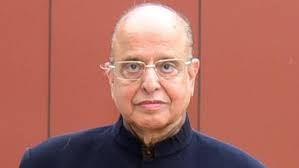Contributions of Dr. K. Kasturirangan | 28 Apr 2025
Why in News?
Dr. K Kasturirangan, former Indian Space Research Organisation (ISRO) chairman (1994 to 2003), passed away in Bengaluru.
What were the Contributions of Dr. K. Kasturirangan?
- Leadership in ISRO: He played a pivotal role in the development of Chandrayaan-1 (2008), India’s first lunar mission, marking India’s entry into space exploration.
- He oversaw the successful operationalisation of key satellites such as the IRS (Indian Remote Sensing) series, INSAT (Indian National Satellite), and the launch of PSLV and GSLV.
- He was the Project Director for India's first two experimental earth observation satellites, BHASKARA-I & II.
- Role in Remote Sensing and National Development: He played a key role in the National Natural Resource Management System (NNRMS), enabling satellite-based services for sectors like agriculture, water management, forestry, and health.
- Pioneering Space Applications: He initiated thematic space missions like EDUSAT (for tele-education), INSAT/GSAT (for telemedicine and communication), OCEANSAT (for oceanography), and CARTOSAT (for cartography), which directly impacted India’s social and economic development.
- Policy Contributions Beyond Science: After his tenure at ISRO, he served as a Rajya Sabha member and later, a member of the Planning Commission (now NITI Aayog).
- He chaired the committee that drafted the National Education Policy (NEP) 2020.
- He chaired the committee responsible for reviewing the Western Ghats Ecology report.
- He recommended that instead of the whole, only 37% of the total area of Western Ghats be brought under Ecological Sensitive Area (ESA).
- Recognition and Awards: His contributions earned him numerous prestigious awards, including Padma Shri, Padma Bhushan and Padma Vibhushan, and international recognition for his work in space science and technology.
UPSC Civil Services Examination, Previous Year Question (PYQ)
Q. With reference to India’s satellite launch vehicles, consider the following statements: (2018)
- PSLVs launch the satellites useful for Earth resources monitoring whereas GSLVs are designed mainly to launch communication satellites.
- Satellites launched by PSLV appear to remain permanently fixed in the same position in the sky, as viewed from a particular location on Earth.
- GSLV Mk III is a four-staged launch vehicle with the first and third stages using solid rocket motors, and the second and fourth stages using liquid rocket engines.
Which of the statements given above is/are correct?
(a) 1 only
(b) 2 and 3
(c) 1 and 2
(d) 3 only
Ans: (a)

